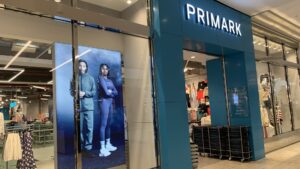The Rise of International Retailers in U.S. Malls: What You Need to Know
Welcome to the Extreme Investor Network blog, where we dive deep into the latest trends, opportunities, and insights that can empower your investment decisions. One trend that’s capturing significant attention is the expansion of international retailers into U.S. shopping centers. Recently, a noteworthy addition made waves in Elmhurst, NY, as Primark opened its doors in Queens Center, marking a bold step in its U.S. growth strategy.
Primark Joins the Ranks of Renowned Retailers
Alongside popular brands like Macy’s, American Eagle, and Bath & Body Works, Primark is making its mark on the retail landscape, offering consumers a wide variety of products including clothing, shoes, and accessories at accessible prices. This Ireland-based discount retailer has ambitions of significantly expanding its presence in the U.S., with plans to increase from 29 existing stores to 60 by the end of next year. But why is now the time for Primark—as well as other foreign retailers—to focus their expansion efforts on the U.S.?
A Global Shift in Retail Dynamics
As the retail landscape evolves, U.S. shopping centers are witnessing an influx of international flair. Names like Spain’s Mango, Canadian Aritzia, and Japan’s Uniqlo are following Primark’s lead, opening new stores and exploring regions that have traditionally housed fewer international brands. According to data from GlobalData, nearly 19,000 stores opened in the U.S. between 2018 and 2023, and a remarkable 28% of these were foreign-owned retailers. This trend demonstrates that international brands are no longer confined to coastal metropolises; they are now actively targeting suburban and inland markets.
Why the U.S. is a Prime Target
Monique Pollard, a London-based retail analyst for Citi, suggests that the U.S. offers a unique blend of opportunities for international retailers. The fragmented nature of the American apparel market, coupled with resilient consumer spending—even amidst inflation—provides fertile ground for growth. Additionally, U.S. consumers have shown a growing fascination with global fashion trends, often fueled by influencers on platforms like Instagram and TikTok.
A report by Forrester indicates that 63% of consumers aged 18–24 discover new brands through social media at least weekly. This dynamic means that smaller international retailers can gain quick traction even if they start with only a handful of stores.
The Competitive Landscape
As foreign brands like Primark, Mango, Aritzia, and Uniqlo find footholds in the U.S. market, some domestic retailers are grappling with store closures and shifting market forces. For instance, Macy’s plans to shutter around 150 locations in the U.S., creating valuable real estate opportunities for these newcomers. Primark’s entry into the U.S. market is a prime example; it often occupies spaces left vacant by traditional anchor stores.
Moreover, Primark has been quick to adapt its offerings based on regional preferences. According to Primark U.S. President Kevin Tulip, the retailer has learned that certain products, such as sports merchandise, must resonate with local teams and culture to succeed—an important lesson in understanding the nuances of U.S. retail.
Staying Relevant Amid Expansion
While the influx of international retailers brings exciting choices for consumers, it is essential to recognize that success isn’t guaranteed. Companies like H&M and Uniqlo have experienced ups and downs as they navigate the complexities of the U.S. market. Yet, the demands of e-commerce, particularly the dominance of giants like Amazon, present unique challenges, especially for retailers like Primark that focus primarily on brick-and-mortar sales.
Primark’s strategy leans heavily on in-store experiences, aiming to provide quality at reasonable prices without compromising on customer experience. This approach appeals to cost-conscious consumers who value both product quality and shopping ambiance.
The Future of Retail: A Blend of International Influence
As we look forward, the U.S. retail landscape is poised for transformation. We are witnessing a unique synergy where international flavors meet local tastes, creating a vibrant shopping environment. For investors and consumers alike, this is a crucial moment to understand how these dynamics might shape future shopping experiences.
With Primark’s planned expansion, alongside the aggressive growth strategies of brands like Mango and Aritzia, the U.S. market is becoming a laboratory for new retail strategies and consumer engagement. By keeping an eye on these developments, we can better navigate the evolving marketplace.
Stay tuned for more insights, trends, and expert analysis by following the Extreme Investor Network blog. Embrace these changes and discover how you can leverage them for your investment strategies!

